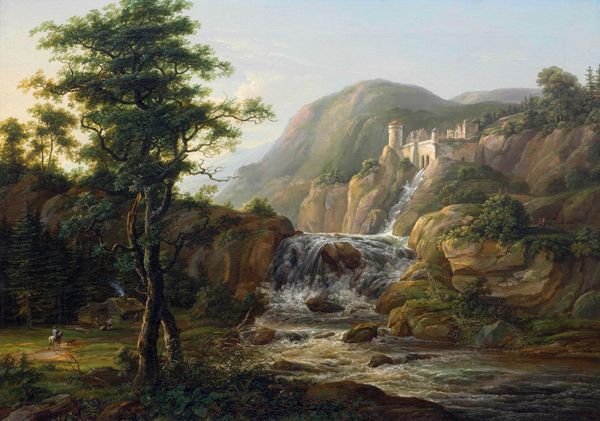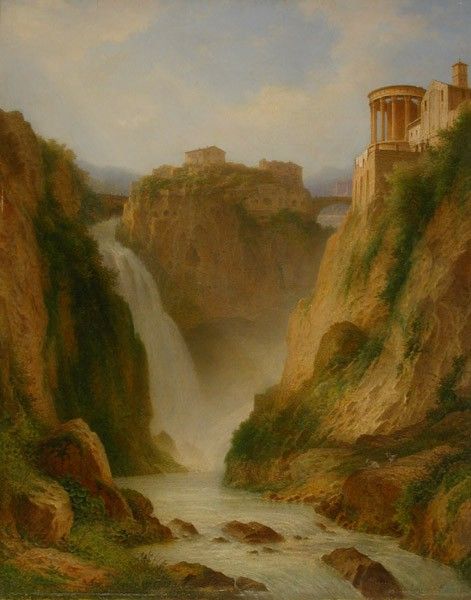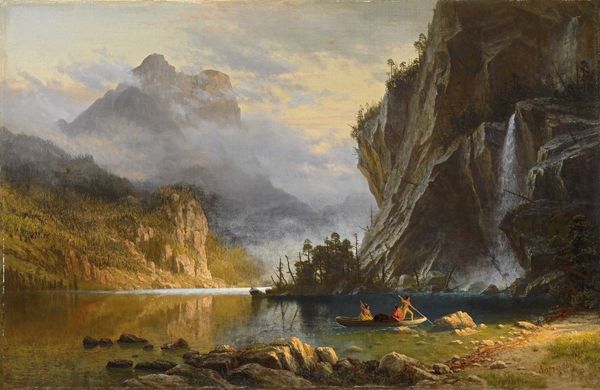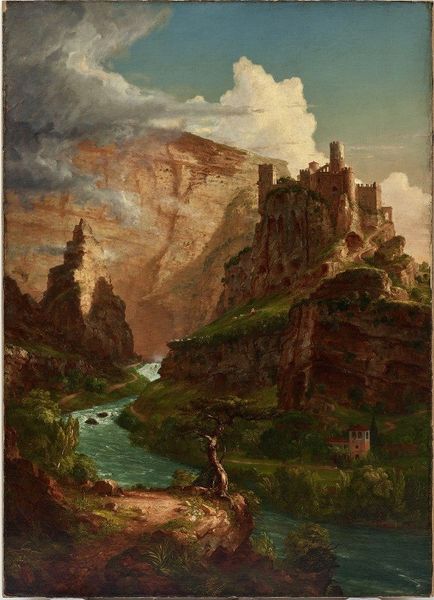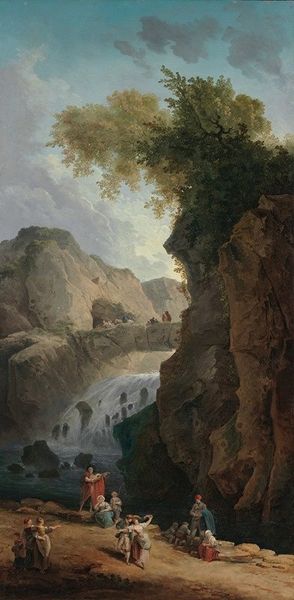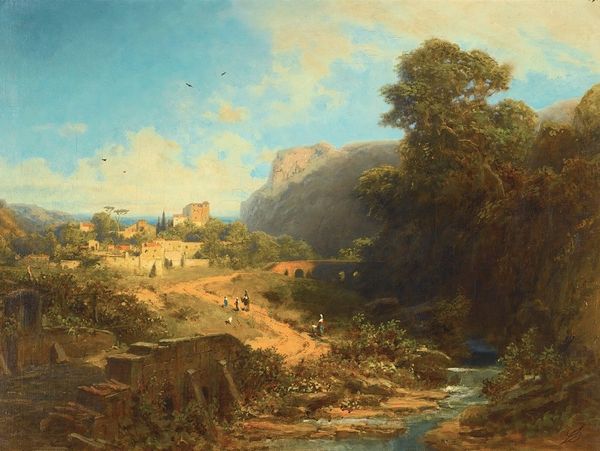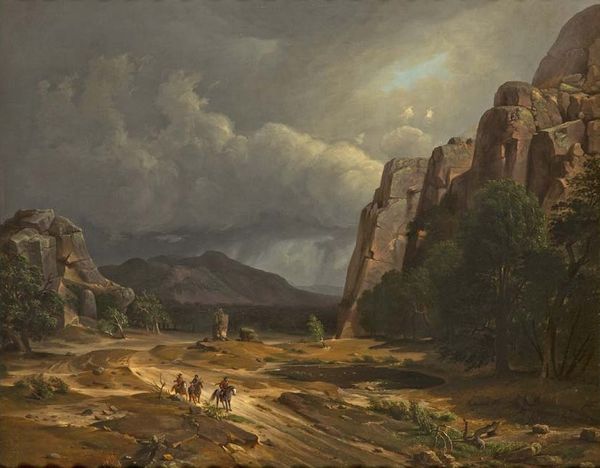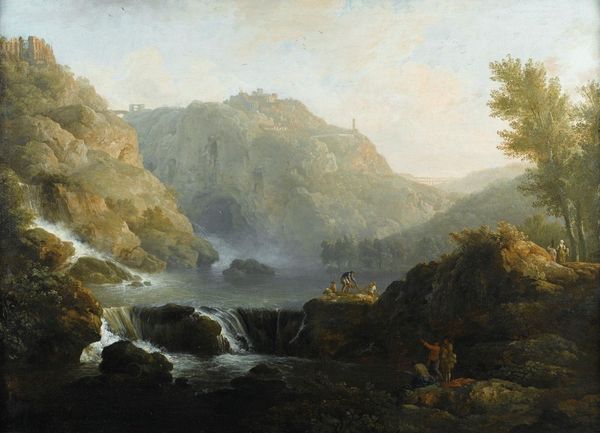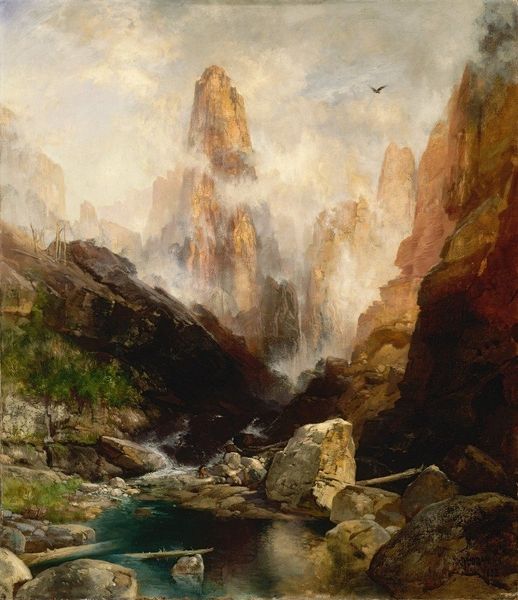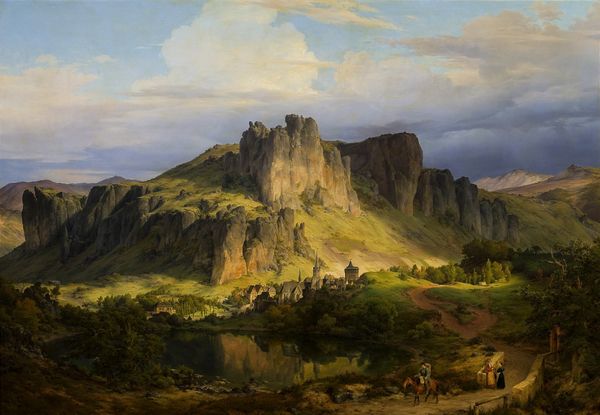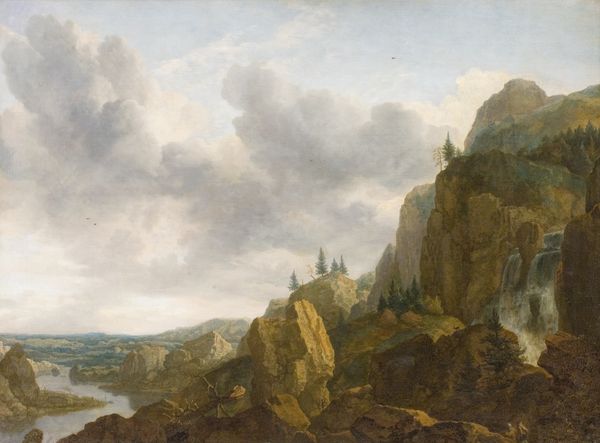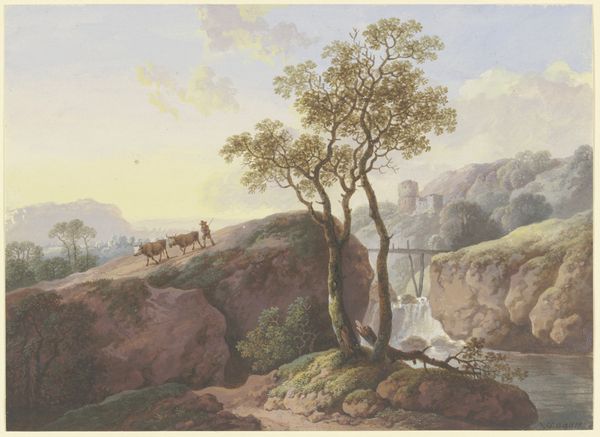
Copyright: Public Domain: Artvee
Editor: Hubert Robert’s “The Springs at Fontaine de Vaucluse,” painted in 1783, captures this incredible natural landscape with figures sprinkled throughout. I'm struck by the sheer scale of the cliffs, yet there's also this sense of serenity. What's your take on this artwork? Curator: Serenity mixed with awe, I’d say that's the magic ingredient, right? Robert really gets at the Romantic ideal – nature’s grandeur dwarfing humanity, but also inviting contemplation. Notice how he plays with light? The way it hits the rock faces creates this almost theatrical sense of drama, like the landscape itself is putting on a show. And those little figures, they are not in charge; nature is, it all just sort of reminds me of a sublime daydream. Does it feel that way for you? Editor: It does. It’s like stepping into a scene from a dream or maybe a play. But are you saying the figures aren't important? Curator: Not unimportant, no. They’re more like witnesses. Robert is interested in history, as a grand backdrop. The figures become almost an afterthought against the backdrop of the natural elements and their monumentality. We, the viewers, are like those figures in this moment now, peering in. I wonder if it occurred to Robert he was pre-staging our viewing experience here today. Editor: So, he’s making a statement about our place in the world? Curator: Absolutely. And the ongoing appeal of that kind of statement. Think of it as a gentle nudge towards humility. Maybe even a dash of perspective to bring back into your own life when you step away from viewing this work. Editor: That’s a powerful takeaway. I came in thinking "pretty landscape", but now I’m considering its larger message about our place in nature. Curator: And I was reminded, in talking through it, how easily we underestimate the staying power of 'pretty landscapes' and all that they can suggest and signify over the ages. Thanks for this!
Comments
No comments
Be the first to comment and join the conversation on the ultimate creative platform.

